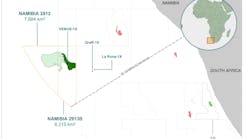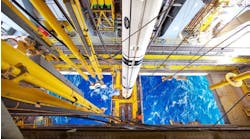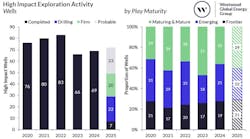Offshore staff
LYSAKER, Norway – Aker BP expects to have five rigs in operation in the Norwegian sector during the current quarter.
Planned operations include infill drilling at the Tambar field, production drilling at Ivar Aasen, production and P&A activity at Valhall (all in the North Sea), and exploration drilling in both the North Sea and Norwegian Sea.
In total, the company plans to participate in 12 exploratory wells this year, seven as operator. Half will be in the Barents Sea, with an estimated exploration spend of $350 million.
Its forecast production for 2018 is 155-160 MMboe/d, at a cost of around $12/boe, with capex this year of around $1.3 billion. In addition, the company expects to spend around $350 million on decommissioning.
Among the company’s operated North Sea projects, two new wells have been drilled and completed at the Boa drill center in the Alvheim area, and both should start operating shortly.
Production from the Valhall area increased during the latter part of last year, due to a combination of new wells and flush production following a planned maintenance shutdown.
Aker BP is maturing a project to expand the capability for water injection to Valhall’s northern basin drainage area, allowing water injection to be directed to existing depleted producers and increasing reserves recovery by 6-8 MMboe.
Assuming sanction during the current quarter, it will look to drill the injector well during Q4 and start injection in 2Q 2019.
The company also expects to take a concept selection decision shortly on a collective development of various fields in the North of Alvheim and Askja-Krafla (NOAKA) area – Frigg Gamma Delta, Langfjellet, Frøy, Fulla, Frigg, Rind and Askja-Krafla – with gross resources of over 500 MMboe.
This is a shared initiative with the partners in the surrounding licenses.
Available infrastructure in the area is limited, so the goal is to develop an economic solution that can tie-in area discoveries and open up potential for new exploration upside.
The solution will likely comprise subsea structures and unmanned/ normally unmanned installations on the individual reservoirs, based on their size and complexity.
As for the Johan Sverdrup phase 1 development, where the company is a partner to operator Statoil, at the end of last year construction of the facilities had reached the 80% completion point.
At Samsung’s yard in South Korea, construction and onshore commissioning of the riser platform is in the final stages. Following transport to Norway, Heerema Marine Contractors will perform the subsequent heavy lift installation offshore this spring (Heerema).
Onshore hook up and commissioning of the drilling platform by Aibel in Haugesund is progressing well, ahead of offshore installation this summer by Allseas’Pioneering Spirit.
Front end engineering and design is nearly complete for the Phase 2 installations, with submission of a development plan scheduled for the second half of this year, with a view to start-up of the Phase 2 facilities in 2022.
It includes 28 additional production and injection wells in the peripheral parts of the Johan Sverdrup oil field, increasing the total number of wells to 64, and adding a fifth platform at the field center to raise production capacity from 440,000 to 660,000 b/d.
02/02/2018


